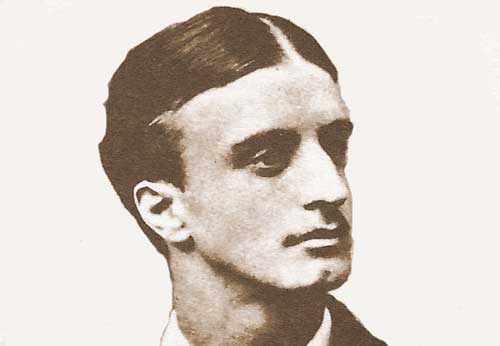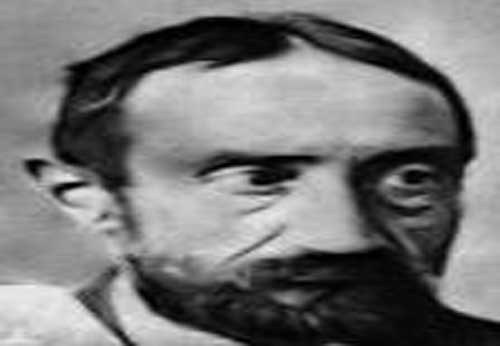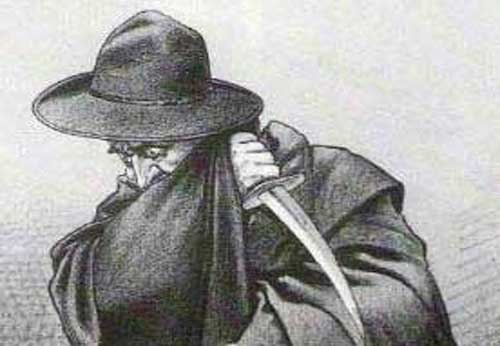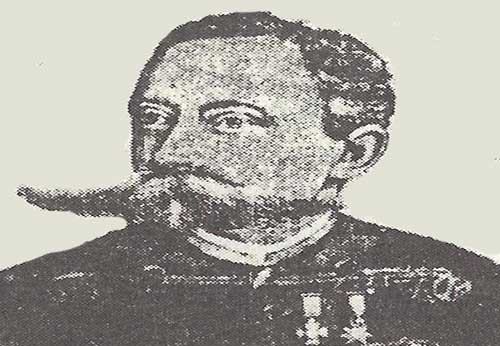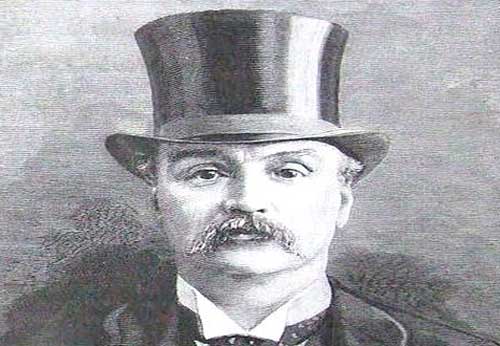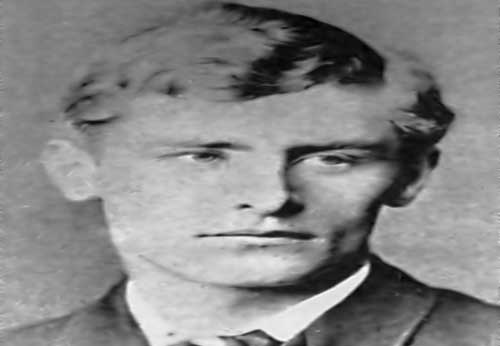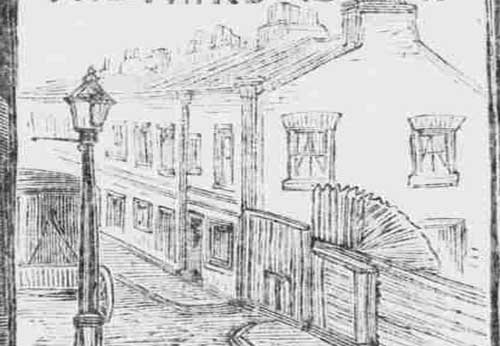- Aaron Kosminski appears to have being the leading suspect for officers Sir Robert Anderson and Donald Swanson.
- He was put into Colney Hatch Asylum in 191 and from there he went to Leavesden Asylum where he died in 1919.
- Contrary to media reports, his guilt has not been proven from traces of DNA found on a shawl.
- Site Author and Publisher Richard Jones
- Richard Jones
AARON KOSMINSKI
A MAJOR JACK THE RIPPER SUSPECT
WHAT MACNAGHTEN SAID
According to Melville Macnaghten, in his 1894 Memoranda, one of the three men who was more likely than Thomas Cutbush to have been Jack the Ripper was "Kosminski" who, according to Macnaghten, was:-
...a Polish Jew, & resident in Whitechapel. This man became insane owing to many years indulgence in solitary vices. He had a great hatred of women, especially of the prostitute class, & had strong homicidal tendencies; he was removed to a lunatic asylum about March 1889..."
SUSPECTED BY THE TWO MOST SENIOR OFFICERS
Kosminski is of particular interest because, in addition to Macnaghten, the two highest ranking officers with direct responsibility for the Jack the Ripper investigation, also considered him to be a strong suspect for the Jack the Ripper murders.
WHAT ROBERT ANDERSON SAID
In 1910, Sir Robert Anderson, Assistant Commissioner throughout the murders, wrote in his memoirs that:-
...undiscovered murders are rare in London, and the "Jack-the-Ripper" crimes are not in that category...I will merely add that the only person who had ever had a good view of the murderer unhesitatingly identified the suspect the instant he was confronted with him; but he refused to give evidence against him...In saying that he was a Polish Jew I am merely stating a definitely ascertained fact..."
CHIEF INSPECTOR SWANSON'S MARGINALIA
Although Anderson didn't name this suspect, it is apparent that he was referring to Macnaghten's "Kosminski," a fact confirmed in 1987 when Chief Inspector Donald Swanson's copy of Anderson's memoir was made public.
Swanson was the officer tasked with assessing all the information on the Jack the Ripper case, and few people possessed anything like his comprehensive knowledge of the murders.
He and Anderson became firm friends and when Anderson's memoir - entitled The Lighter Side of My Official Life - was published, Swanson received his own personally inscribed copy.
Swanson made penciled annotations to Anderson's narrative, and in so doing provided a little more information.
Where Anderson talks of a witness "unhesitatingly" identifying their suspect but refusing to give evidence against him, Swanson explains that this was "...Because the suspect was also a Jew ...and witness would be the means of murderer being hanged which he did not wish to be left on his mind..."
He goes on to say that, following this identification, the suspect was returned to his brother's house in Whitechapel where the City Police kept him under constant surveillance.
A short time later this suspect was taken to Stepney Workhouse and from there he was sent to Colney Hatch lunatic asylum where, according to Swanson, he died shortly afterwards.
Swanson ends with the emphatic statement that "Kosminski was the suspect."
WHO WAS KOSMINSKI?
It is now known that the suspect in question was a man named Aaron Mordke Kosminski (1865 - 1919), a Polish-born immigrant, whose father Abram Josef Kozminski was a tailor, an occupation that Aaron's brother, Isaac, would also take up.
As far as can be ascertained, Isaac arrived in London at some stage between 1871 and 1873, where he became a successful and prosperous tailor.
We don't know exactly when Aaron arrived in London, but it may have been around 1880 - 1881.
We know virtually nothing about Aaron's life in London. His later Medical records state his occupation as "hairdresser", but it was also stated that he had not attempted any work for years.
HIS 1889 COURT APPEARANCE
There is one brief glimpse of him in the public record around the time of the Whitechapel murders.
In December, 1889, he was one of several people who were summoned to appear at the Guildhall Court in the City of London for having unmuzzled dogs on a public thoroughfare.
Lloyd's Weekly Newspaper reported on this court appearance in its issue of Sunday, 15th December, 1889:-
Aaron Kosminski was summoned for a similar offence.
Police-constable Borer said that he saw the defendant with an unmuzzled dog, and that when asked his name he gave that of Aaron Kosminski, which his brother said was wrong, as his name was Abrahams.
Defendant said that the dog was not his, and his brother said it was found more convenient here to go by the name of Abrahams, but his name was Kosminski,
Sir Polydore de Keyser imposed a fine of ten shillings and costs, which the defendant would not pay as it was the Jewish Sunday, and it was not right to pay money on Sunday.
He was given till Monday to pay."
Source: Lloyd's Weekly Newspaper, Sunday, 15th December, 1889.
SIGNS OF MENTAL ILLNESS
By mid-1890, he was displaying symptoms of mental illness, and was admitted to Mile End Old Town Workhouse on 12th July, 1890. His address was given as 3, Sion Square.
His stay on this occasion was a relatively short one, and he was discharged three days later, on 15th July, 1890.
He was re-admitted in early 1891, his abode this time being given as 16, Greenfield Street, which was the home of his brother-in-law, Morris Lubnowski, who was married to Aaron's sister, Matilda.
This time, he was certified as insane and, on 7th February, 1891, he was transferred to the Middlesex County Lunatic Asylum at Colney Hatch.
The Admission Book gives his age as twenty-six; his occupation as "hairdresser"; the supposed cause of his insanity is listed as "unknown" - although "Self-abuse" was later added; and his nearest known relative is listed as "Wolf Abrahams (brother), 8, Lion Square, Commercial Rd, E1."
Significantly, the admission book states that he was not a danger to others, which, if there was a certainty that he had been Jack the Ripper, would be something of a major omission
FACTS INDICATING INSANITY
The Admission Book also lists the following facts about him, which are attributed to "a medical man":-
He declares that he is guided and his movements altogether controlled by an instinct that informs his mind, he says that he knows the movements of all mankind, he refuses food from others because he is told to do so, and he eats out of the gutter for the same reason."
PICKS UP BREAD FROM THE GUTTER
The records also quote a witness, identified as Jacob Cohen, of "51, Carter Lane, St Paul's EC":-
...he goes about the streets and picks up bits of bread out of the gutter and eats them, he drinks water from the tap & he refuses food at the hands of others. He took up a knife and threatened the life of his sister. He is very dirty and will not be washed. He has not attempted any kind of work for years."
TRANSFERRED TO LEAVESDEN ASYLUM
Aaron Kosminski would spend just over three years at Colney Hatch Asylum, where he was described at various times as being, "extremely deluded and morose," "rather difficult to deal with on account of the dominant character of his delusions," "Incoherent, apathetic, excitable," "Indolent, but quiet, and clean in habits," "dull & vacant".
On 19th April, 1894, he was transferred to Leavesden Asylum, where he would spend the remaining twenty-five years of his life, dying there on the 24th of March, 1919.
ARGUMENTS AGAINST HIS GUILT
Schizophrenic, delusional, paranoid and incoherent are all characteristics displayed by Aaron Kosminski.
But there are numerous arguments against his having been Jack the Ripper.
Swanson, apparently knew little about his fate, as Kosminski didn't, as Swanson claimed, die shortly after being admitted to Colney Hatch asylum. In fact, he lived for many years, transferring to Leavesden Asylum in 1894, where he died in 1919.
Throughout the entire period of his confinement, Aaron Kosminski was never classed as homicidal, and it is specifically stated in his records, that he was not a danger to others.
Some of his notes state that he was excitable, but the only mention of his being violent was that he once grabbed a chair and made to strike an attendant with it.
NO CONCLUSIVE PROOF - YET
Anderson and Swanson were the two highest ranking officers with direct responsibility for the Ripper investigation, and they were both in a position to know the evidence against all the suspects.
Yet, unless they are referring to a different Kosminski, or there is more information about him that has yet to come to light, there is little evidence to link Aaron Kosminski to the Jack the Ripper murders.

